Direction (1-5): The question below is followed by two statements numbered I and II. You have to decide whether the data provided in the statements are sufficient to answer the question. Read both the statements and give an answer.
Q1. How is David related to Indi?
Note: Names don’t show the gender of the person.
I. Jake has two sons and only one of them is married. Emerson is the daughter of Glenn. David is married to Beth. Harry is the brother of Indi, who is the sister of Anna. Clay is the brother of Flo.
II. Kane is the father of Glenn, who is the brother of Harry. Quinn is married to Indi. Beth is the daughterin-law of Flo and the sister-in-law of Emerson, who is not married. Flo has only two children.
(a) The data in statement I alone is sufficient to answer the question, while the data in statement II alone is not sufficient to answer the question.
(b) The data in statement II alone is sufficient to answer the question, while the data in statement I alone is not sufficient to answer the question.
(c) The data either in statement I alone or in statement II alone is sufficient to answer the question.
(d) The data even in both statements I and II together are not sufficient to answer the question.
(e) The data in both statements I and II together are necessary to answer the question.
Q2. Six people S1, S2, S3, S4, S5, and S6 are sitting in a row facing the north, not necessarily in the same order. Who among the following is sitting at the rightmost corner?
I. S3 is sitting third from the leftmost corner. S2 sits to the right of S1 but not at the rightmost corner. S5 sits 2nd to the right of S6, who sits at the leftmost corner.
II. S1 is sitting third from the rightmost corner. S5 sits right to S6 but left to S3. S3 sits to the left of S1. S2 sits to the immediate left of S4.
(a) The data in statement I alone is sufficient to answer the question, while the data in statement II alone is not sufficient to answer the question.
(b) The data in statement II alone is sufficient to answer the question, while the data in statement I alone is not sufficient to answer the question.
(c) The data either in statement I alone or in statement II alone is sufficient to answer the question.
(d) The data even in both statements I and II together are not sufficient to answer the question.
(e) The data in both statements I and II together are necessary to answer the question.
Q3. Five people A, B, C, D, and E, are sitting in a row facing the north direction but not necessarily in the same order. Who is sitting to the immediate right of A?
I. A is sitting to the immediate right of E and second to the left of B, who is not sitting at any end of the row. C is sitting to the right of D.
II. D is sitting in the middle of the row. B and C are immediate neighbours. A and B are sitting to the right of E.
(a) The data in statement I alone is sufficient to answer the question, while the data in statement II alone is not sufficient to answer the question.
(b) The data in statement II alone is sufficient to answer the question, while the data in statement I alone is not sufficient to answer the question.
(c) The data either in statement I alone or in statement II alone is sufficient to answer the question.
(d) The data even in both statements I and II together are not sufficient to answer the question.
(e) The data in both statements I and II together are necessary to answer the question.
Q4. What is the direction of point C with respect to point E?
I. Point D is exactly between point C and point G and they lie in the same line. Point C is in the west of point G and south of point F. Point H is in the north-west of point E and east of point F.
II. Point D is in the south of point H and north-west of point E. Point F is in the west of point H and north of point C. Point G is in the east of point C and north-east of point E. Point D is in east of point C.
(a) The data in statement I alone is sufficient to answer the question, while the data in statement II alone is not sufficient to answer the question.
(b) The data in statement II alone is sufficient to answer the question, while the data in statement I alone is not sufficient to answer the question.
(c) The data either in statement I alone or in statement II alone is sufficient to answer the question.
(d) The data even in both statements I and II together are not sufficient to answer the question.
(e) The data in both statements I and II together are necessary to answer the question.
Q5. Seven people A, B, C, D, E, F, and G live on different floors in a seven-story building but not necessarily in the same order. Who lives on the sixth floor?
I. D lives on an odd-numbered floor and lives immediately above F. At least two persons live between G and A.
II. B lives on the fourth floor. Only one person lives between C and E. A lives above F.
(a) The data in statement I alone is sufficient to answer the question, while the data in statement II alone is not sufficient to answer the question.
(b) The data in statement II alone is sufficient to answer the question, while the data in statement I alone is not sufficient to answer the question.
(c) The data either in statement I alone or in statement II alone is sufficient to answer the question.
(d) The data even in both statements I and II together are not sufficient to answer the question.
(e) The data in both statements I and II together are necessary to answer the question.
Direction (6-10): Study the following data carefully and answer the questions accordingly.
Seven people Q, R, S, T, U, V, and W are sitting in a row which has nine seats where two seats are vacant but not necessarily in the same order. Some of them are facing the north and some are facing the south direction.
T who is not an immediate neighbour of S, sits third from an end. W sits fourth to the right of T. Three people sit between R and W. R and T face the opposite direction. Q sits to the right of R. Two people sit between S and Q. Both the vacant seats are not near to each other. V sits immediate right of S. S and W face the opposite directions. People sitting at the end face the opposite direction. W does not sit to the right of U. V and U face the opposite direction. V does not face the south direction. Extreme end of row is not vacant.
Q6. What is the position of V?
(a) Immediate left of U
(b) Third to the left of R
(c) Second to the right of S
(d) Fourth from the end
(e) None of these
Q7. How many persons sit between U and S?
(a) Four
(b) One
(c) Three
(d) Two
(e) None of these
Q8. Who among the following sits fourth to the right of T?
(a) The one who sits immediate right of S.
(b) The one who sits two places away from U
(c) The one who sits eighth from an end
(d) The one who sits between W and S
(e) None of these
Q9. Who is/are the immediate neighbor/neighbors of T?
(a) Only S
(b) Both Q and R
(c) Only R
(d) Both R and S
(e) None is correct
Q10. Find the odd one.
(a) W
(b) The one, who sits second from right end
(c) The one who sits immediate right of W
(d) The one, who immediate right of S
(e) U
Directions (11-15): Read the following information carefully and answer the given questions.
Eight persons P, Q, R, S, T, U, V and W sitting around a square table in such a way that four of them sit at four corners who are facing towards center and rest four who sits at the middle of the side, are facing outside the center. They were born on the same day of the same month but in different years. All their ages are to be considered from the base year i.e., 2018.
P is 10 years old and sits at the corner. Only two persons sit between P and the one who was born in 1991. W sits second to the left of the one who is 27 years old. V is 8 years old and sits third to the right of R. R does not sits at the middle of the side. S sits third to the left of the one who is 18 years old. Age difference between T and the one who sits immediate left of P is 18 years. R is 9 years younger than S who was born in 1988. Q sits second to the right of the one who is 4 years old. S does not sit at the middle of the side.
Q11. Who sits exactly between the one who is 18 years old Q?
(a) P
(b) S
(c) R
(d) V
(e) T
Q12. Four of the following five are alike in a certain way based on their seating positions in the above arrangement and so from a group. Who among the following does not belong to that group?
(a) U
(b) Q
(c) The one who was born in 2010
(d) The one who is 21 years old
(e) W
Q13. What is the position of V with respect to T?
(a) Third to the left
(b) Immediate right
(c) Second to the right
(d) Third to the right
(e) Immediate left
Q14. How many persons sit between S and the one who was born in 1997 when counted right from S?
(a) None
(b) One
(c) Two
(d) Three
(e) Four
Q15. Who sits diagonally opposite to the one who is 10 years old?
(a) The one who was born in 1991
(b) T
(c) The one who was born in 2010
(d) R
(e) S
Solutions
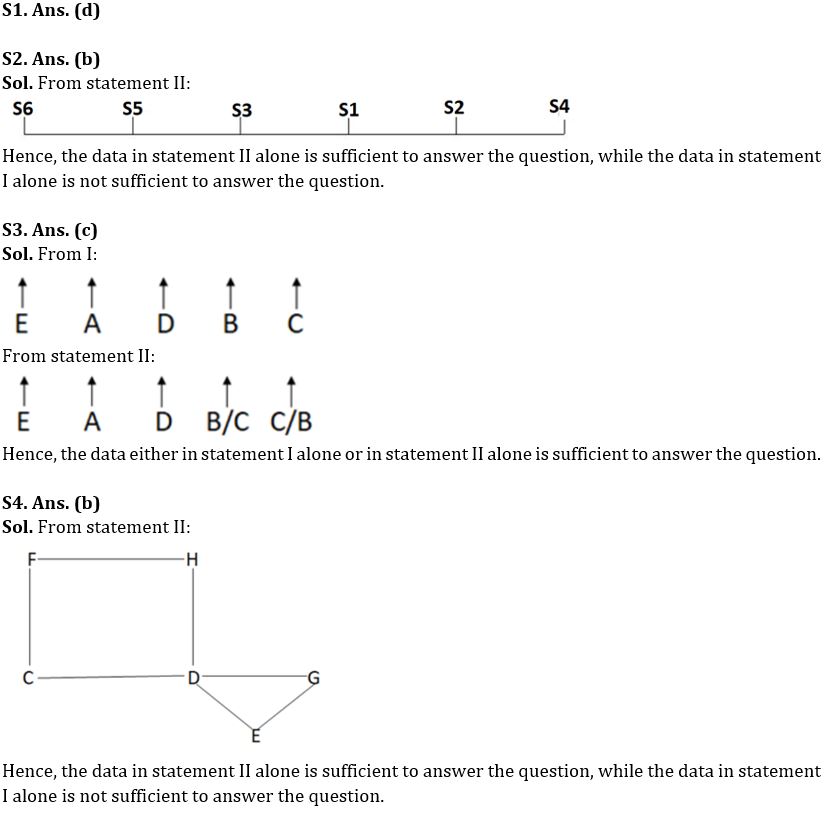
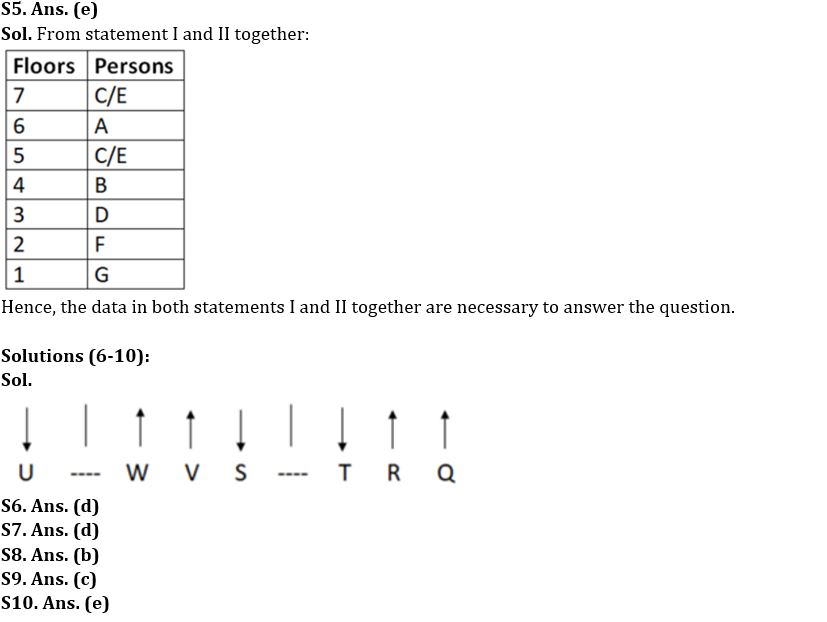
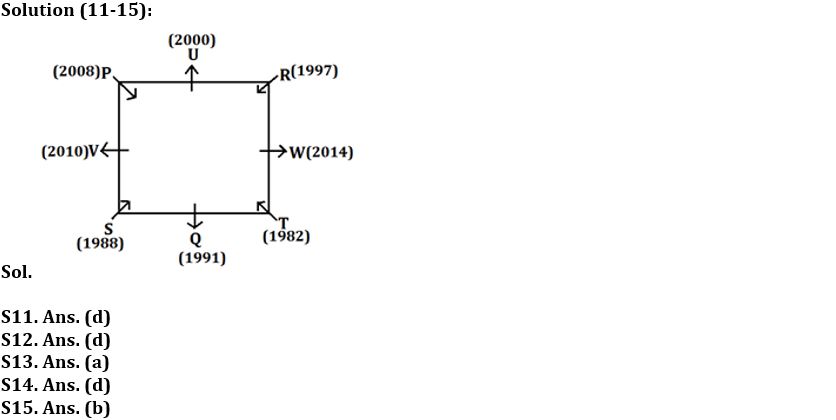


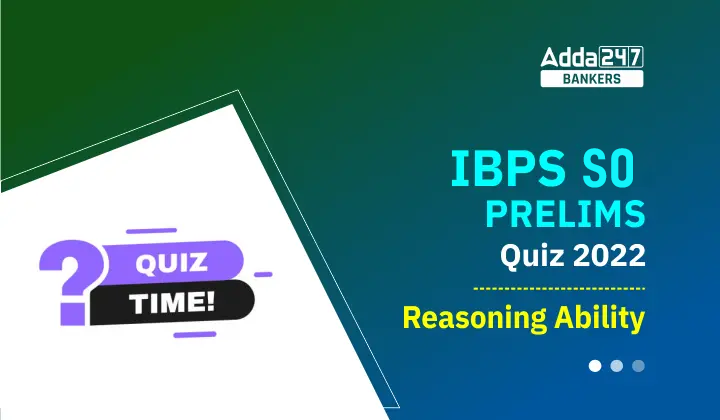
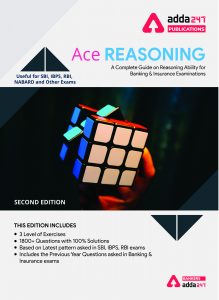

 50+ Data Sufficiency Questions For Bank ...
50+ Data Sufficiency Questions For Bank ...
 Quantitative Aptitude Quiz For Bank Main...
Quantitative Aptitude Quiz For Bank Main...


